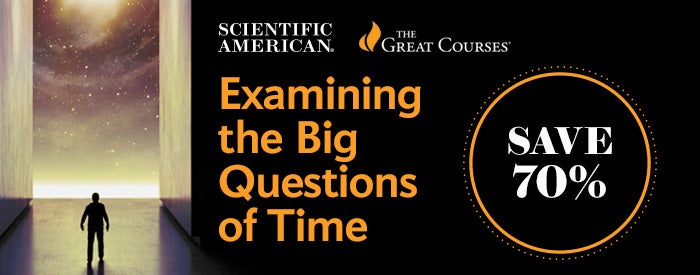| From Your Instructor Dear Reader,
What is time, anyway? It turns out that’s one of the hottest questions in science. We at The Great Courses and Scientific American have had a blast exploring notions of time from around the world and throughout history, and we hope you’ll join us for this mind-bending (in a good way) series.
The lectures originated with some of the world’s experts in various research fields writing in Scientific American about how they study time and its implications. The Great Courses brought these stories to life with stunning graphics and delightful videos. This is our first collaboration, and I’m thrilled with how well the series turned out.
Time means different things in different places, anthropologists explain. Neuroscientists have found how the brain comprehends different scales of time using internal clocks, and psychologists are studying how the experience of time shapes our perceptions and memories. Engineers are finding ever more precise ways to measure time. Experiments have confirmed that time can be bent by gravity or travel. Physicists are debating whether it’s real or just an illusion – and they’re teaming up with philosophers to attempt to understand time.
Join me on this fascinating exploration of the facets of time. We hope this series will be a great use of your time, and help enrich your appreciation of the time you spend in other pursuits. Let’s synchronize our watches and begin! .
Offer: Save 70% until May 31, 2021. No code required. Thank you,
Laura Helmuth
Editor-in-Chief
Scientific American
| 

Comments
Post a Comment